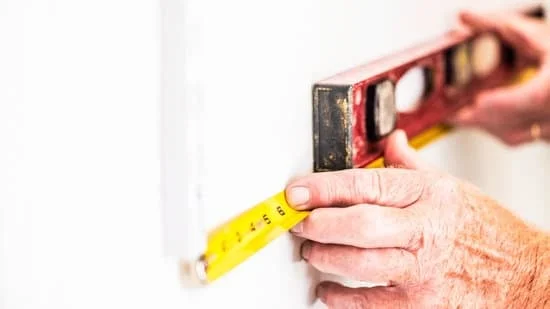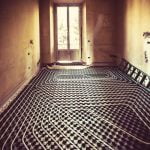What home improvements are tax deductible for capital gains? When it comes to selling your home, making certain improvements can have a positive impact on your capital gains tax. In this article, we will discuss the qualifying home improvements for capital gains tax and provide examples of which improvements are tax deductible. We will also cover non-qualifying home improvements and how to calculate the tax deductible amount for eligible upgrades.
Capital gains tax can become a significant consideration when selling a property. It is important to understand how certain home improvements can affect your tax liability. By making informed decisions about renovations and upgrades, homeowners may be able to minimize their capital gains tax burden.
In this section, we will provide an overview of capital gains tax, explaining key concepts and considerations that homeowners should be aware of when planning home improvements with an eye toward minimizing their tax liability. We will also discuss the importance of consulting with a tax professional to ensure compliance with relevant laws and regulations. Understanding the basics of capital gains tax is essential for homeowners seeking to maximize their tax deductions for home improvements.
Qualifying Home Improvements for Capital Gains Tax
When it comes to understanding which home improvements are tax deductible for capital gains, it is important to first have a clear understanding of what qualifies as a capital gain. In general, a capital gain is the profit made from the sale of an asset, in this case, your home or property.
When you make improvements to your home, these expenses can be added to the cost basis of your property, which in turn can reduce the amount of capital gains tax you may owe when you sell your home.
So what home improvements are tax deductible for capital gains? Qualifying home improvements typically include any renovations or additions that increase the value of your property. This can include anything from adding a new room, upgrading the kitchen or bathroom, installing a new HVAC system, or even making energy-efficient upgrades. Essentially, any improvement that adds to the overall value and quality of your home can potentially be tax deductible for capital gains.
It’s important to note that routine repairs and maintenance do not typically qualify as tax-deductible home improvements for capital gains. These types of expenses are considered necessary upkeep rather than value-adding investments in your property. As such, expenses like fixing a leaky roof or repairing broken windows would not be eligible for tax deductions when it comes to calculating capital gains on the sale of your home.
Examples of Home Improvements That Are Tax Deductible
When it comes to home improvements that are tax deductible for capital gains, it’s important to understand what qualifies. Generally speaking, only home improvements that increase the value of your property are considered eligible for tax deductions. This includes both interior and exterior upgrades that enhance the overall quality and functionality of the home.
One example of a tax-deductible home improvement is the addition of a new room or renovation of an existing one, such as a kitchen or bathroom remodel. These projects not only make the home more livable for you and your family but also add significant value to the property. Another example is installing energy-efficient appliances, windows, or doors, which not only qualify for tax deductions but may also be eligible for additional incentives and rebates.
It’s also worth noting that maintenance and repairs may not always qualify as tax-deductible home improvements. While they are necessary to keep your home in good condition, they typically don’t increase the overall value of the property. As such, it’s important to distinguish between upgrades that add value and routine maintenance when considering potential tax deductions for capital gains.
Overall, understanding which home improvements are tax deductible for capital gains requires careful consideration and consultation with a qualified tax professional who can provide specific guidance based on individual circumstances. By doing so, homeowners can ensure they maximize their potential tax benefits while making valuable upgrades to their homes.
| Qualifying Home Improvements | Non-Qualifying Home Improvements |
|---|---|
| New room addition | Maintenance and repairs |
| Kitchen or bathroom renovation | Basic landscaping upkeep |
| Energy-efficient upgrades | Cosmetic enhancements (e.g. painting) |
Non-Qualifying Home Improvements for Capital Gains Tax
Cosmetic Improvements
Cosmetic improvements such as painting, wallpapering, and replacing flooring are not considered tax deductible for capital gains. These types of upgrades are typically done to enhance the visual appeal of a home rather than its overall value. While they may make the property more attractive to potential buyers, they do not add significant value to the home in the eyes of the IRS.
General Maintenance and Repairs
General maintenance and repair work, such as fixing a leaky roof, repairing plumbing issues, or replacing broken appliances, are also not eligible for tax deductions on capital gains. These types of improvements are considered necessary upkeep rather than enhancements that increase the property’s value. While they are important for maintaining the livability of the home, they do not qualify as deductible expenses.
Personal Use Items
Any improvements made to a home solely for personal enjoyment, such as adding a swimming pool or constructing a personal gym, are not tax deductible for capital gains. The IRS does not consider these types of additions to contribute to the overall value of the property in a way that would qualify for deductions. It’s important to keep in mind that any improvements that are purely for personal use will not count towards reducing your capital gains tax liability.
Understanding which home improvements are not eligible for tax deductions is just as important as knowing which ones are. By avoiding non-qualifying expenses, homeowners can ensure that they’re making strategic investments in their properties while maximizing their potential tax benefits. Consulting with a professional tax advisor can provide further clarity on what counts as a qualifying improvement and what doesn’t when it comes to capital gains taxes on home improvements.
How to Calculate the Tax Deductible Amount for Home Improvements
When it comes to calculating the tax deductible amount for home improvements, it’s important to understand the specific guidelines set by the Internal Revenue Service (IRS). The IRS allows homeowners to add the cost of certain home improvements to the original purchase price of their home, which can help reduce their capital gains tax when they sell. However, not all home improvements qualify for this tax deduction, so it’s crucial to know which ones are eligible.
Understanding Adjusted Basis
To calculate the tax deductible amount for home improvements, homeowners need to determine their adjusted basis. This is essentially the original purchase price of the home, plus any qualified capital improvements made over the years. The adjusted basis helps in determining the capital gain or loss when selling a property.
Costs Included in Home Improvement Expenses
The costs that can be included in home improvement expenses for calculating tax deductions may include labor and material costs for renovations, additions, landscaping, and other similar projects. It’s important to keep detailed records and receipts of these costs to support any claims made on the tax return.
Understanding Depreciation
Another factor in calculating the tax deductible amount for home improvements is depreciation. Certain types of property improvements can qualify for depreciation over time, allowing homeowners to deduct a portion of these expenses each year on their tax return. Understanding how depreciation works and which improvements are eligible for this deduction is essential for maximizing tax benefits on home improvements.
By understanding how to calculate the tax deductible amount for home improvements and keeping thorough documentation of all expenses related to qualified projects, homeowners can maximize their potential capital gains tax savings when selling their property. It’s always advisable to consult with a qualified tax professional or accountant to ensure compliance with IRS guidelines and take full advantage of available deductions.
Tax Benefits and Incentives for Energy-Efficient Home Improvements
When it comes to making home improvements, homeowners can benefit from tax incentives and deductions for energy-efficient upgrades. These incentives are designed to promote the use of renewable energy sources and reduce the overall carbon footprint of residential properties. The government provides these benefits as a way to encourage homeowners to invest in sustainable and environmentally-friendly home improvements.
Some examples of energy-efficient home improvements that may be eligible for tax benefits include the installation of solar panels, wind turbines, geothermal heat pumps, and energy-efficient windows and doors. These upgrades not only reduce energy consumption but also contribute to the overall value of the property. Homeowners may be eligible for federal tax credits or state-level incentives for investing in these types of improvements.
In addition to tax benefits, energy-efficient home improvements can also result in long-term savings on utility bills. By reducing energy consumption, homeowners can lower their monthly expenses while also benefiting from potential tax deductions when filing their annual taxes. It’s important for homeowners to keep detailed records of all expenses related to these upgrades in order to accurately calculate any potential tax benefits.
Finally, it’s important to note that while there are many energy-efficient home improvements that are eligible for tax deductions, not all upgrades qualify. It’s essential for homeowners to familiarize themselves with the specific requirements outlined by the Internal Revenue Service (IRS) or consult with a tax professional before moving forward with any projects in order to ensure eligibility for any potential incentives or deductions.
| Energy-Efficient Home Improvements | Tax Benefits |
|---|---|
| Solar Panels | Federal Tax Credits |
| Energy-Efficient Windows and Doors | State-Level Incentives |
| Geothermal Heat Pumps | Potential Tax Deductions |
Documentation and Record-Keeping for Tax Deductible Home Improvements
When it comes to claiming tax deductions for home improvements, proper documentation and record-keeping are crucial. Without the necessary paperwork, you may not be able to prove the cost of the improvements or their impact on your property’s value. Here are some important documents and records to keep track of:
- Receipts and Invoices: Keep all receipts and invoices related to the home improvements. This includes materials, labor costs, and any permits or fees.
- Before-and-After Photos: Take photographs of the areas or features of your home before and after the improvements are made. These can serve as visual evidence of the work that was done.
- Contractor Agreements: If you hired a contractor to perform the home improvements, make sure to keep a copy of the signed contract. This should outline the scope of work, costs, and timeline for completion.
In addition to these documents, it’s important to keep a detailed record of any correspondence with tax authorities regarding your home improvements. This may include letters or emails related to deductions, appraisals, or assessments. By maintaining organized records, you can easily substantiate your claims in case of an audit.
Lastly, consider creating a dedicated file or digital folder specifically for your home improvement documentation. This will help ensure that everything is easily accessible when it comes time to file your taxes.
Remember that proper documentation not only supports your tax deduction claims but also helps protect you in case of any disputes with tax authorities regarding the legitimacy of your deductions.
By keeping thorough records and documentation for tax-deductible home improvements, you can maximize your potential savings and avoid unnecessary headaches during tax season.
Tips for Maximizing Tax Deductions on Home Improvements
When it comes to maximizing tax deductions on home improvements for capital gains, there are several strategies and tips that homeowners can consider. These tips can help ensure that you are taking full advantage of any tax benefits available to you while also enhancing the value of your property. Here are some tips for maximizing tax deductions on home improvements:
- Keep detailed records: One of the most important things you can do to maximize tax deductions on home improvements is to keep thorough and accurate records of all expenses related to the improvements. This includes receipts, invoices, contracts, and any other documentation that demonstrates the costs incurred for the improvements.
- Understand eligible expenses: It’s essential to have a clear understanding of what home improvements are tax deductible for capital gains. Generally, improvements that increase the value and extend the useful life of your property may be eligible for a tax deduction. This includes renovations, additions, landscaping, and certain energy-efficient upgrades.
- Consider timing: The timing of your home improvements can also have an impact on your tax deductions. For example, spreading out major renovations over several years may allow you to benefit from multiple years’ worth of deductions rather than using them all at once.
By implementing these tips, homeowners can make sure they are making the most out of their eligible tax deductions for home improvements while increasing the value and appeal of their property.
Overall, maximizing tax deductions on home improvements requires careful planning, record-keeping, and a clear understanding of eligible expenses. By following these tips and consulting with a qualified tax professional when necessary, homeowners can take full advantage of any available tax benefits while improving their property’s value. Remember to keep thorough records, understand eligible expenses, consider timing strategically with projects to increase potential deductions in future years.
It is essential to stay informed about any changes or updates in tax laws regarding capital gains and home improvement deductions to ensure that you are taking full advantage of all available benefits.

Consultation With a Tax Professional for Home Improvement Tax Deductions
In conclusion, understanding which home improvements are tax deductible for capital gains is essential for homeowners looking to maximize their tax benefits. Qualifying home improvements can help reduce the capital gains tax liability when selling a property, but it’s important to know which improvements qualify and how to calculate the tax-deductible amount.
Examples of home improvements that are typically tax deductible for capital gains include renovations that increase the property’s market value, such as adding a new room, upgrading the kitchen or bathrooms, or installing energy-efficient systems. On the other hand, non-qualifying improvements like routine maintenance or repairs do not usually provide tax benefits when it comes to capital gains taxes.
To ensure that you are making the most of your eligible tax deductions for home improvements, it is advisable to consult with a tax professional. They can provide personalized guidance on maximizing deductions based on your specific circumstances and help you navigate the complexities of claiming tax benefits for home improvements.
With proper documentation and record-keeping, along with expert advice, homeowners can take full advantage of available tax incentives for qualifying home improvements. Ultimately, consulting with a tax professional can lead to significant savings and peace of mind when it comes to managing capital gains taxes on real estate transactions.
Frequently Asked Questions
Can You Deduct Home Improvement Costs From Capital Gains?
You cannot deduct home improvement costs from capital gains when selling your home. However, these costs can be added to the cost basis of your home, reducing the amount of capital gains subject to tax.
What Expenses Can I Offset Against Capital Gains Tax?
Expenses that can be offset against capital gains tax include transaction costs such as real estate agent commissions, legal fees, and title insurance. Home improvements that increase the cost basis of the property can also be used to offset capital gains.
What Does the IRS Consider Capital Improvements on Home?
The IRS considers capital improvements on a home as those that increase its value, prolong its useful life, or adapt it to new uses. Examples include adding a new room, replacing the roof, upgrading heating or air conditioning systems, or installing a new security system. These improvements can be added to the cost basis of your home for tax purposes.

I’m thrilled to have you here as a part of the Remodeling Top community. This is where my journey as an architect and remodeling enthusiast intersects with your passion for transforming houses into dream homes.





